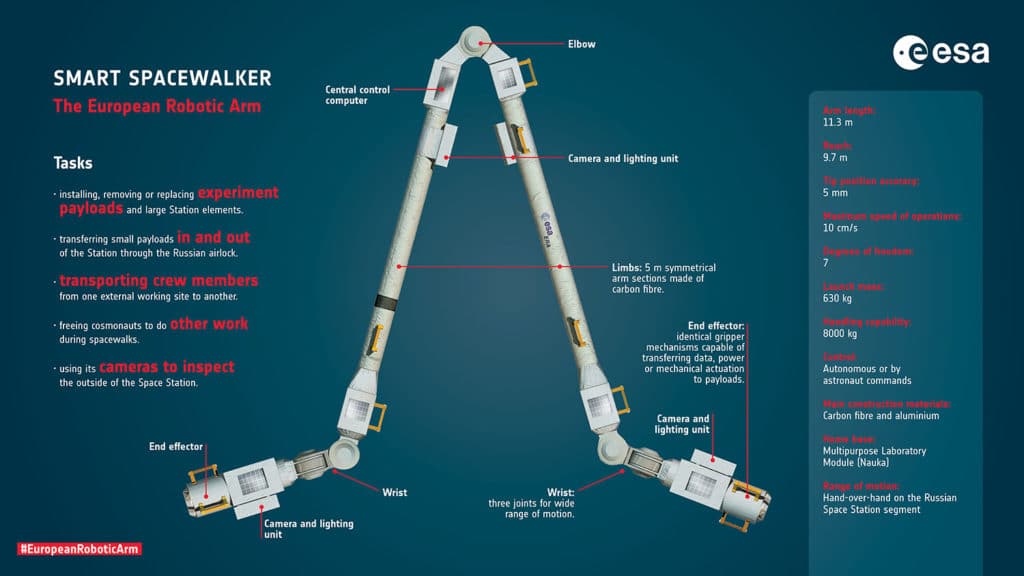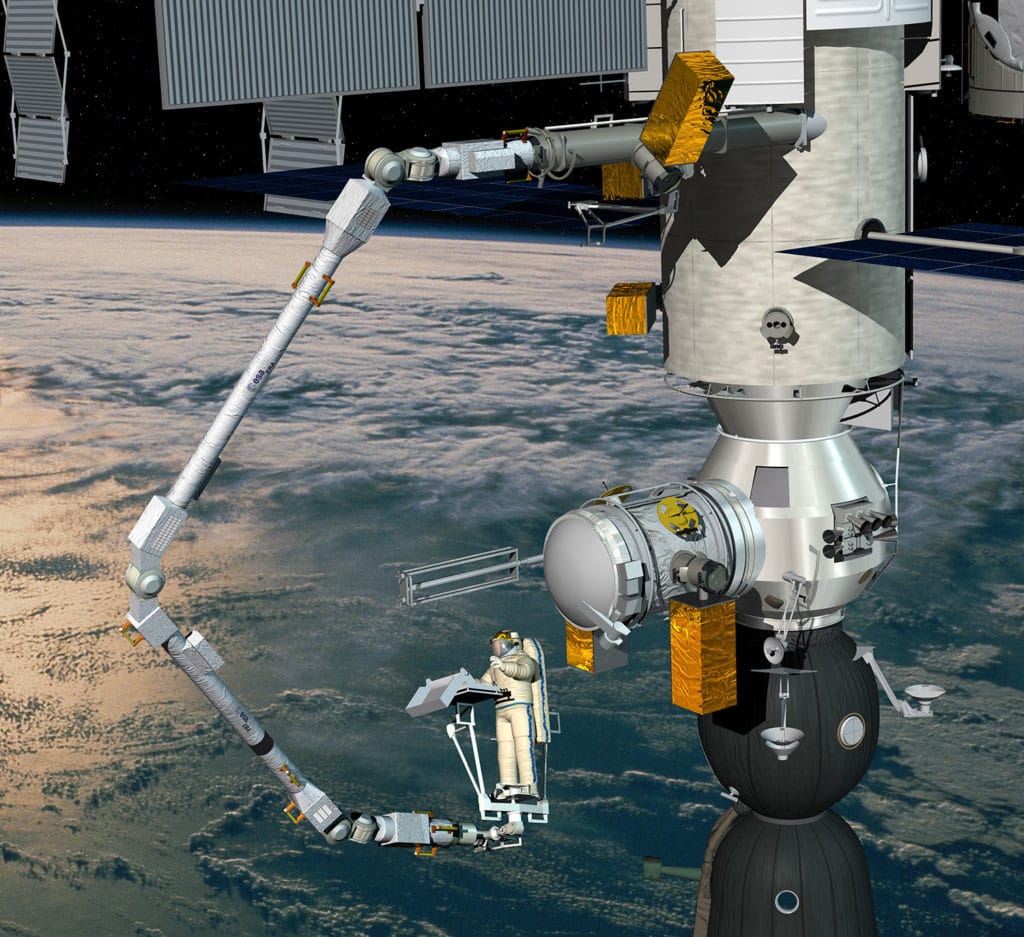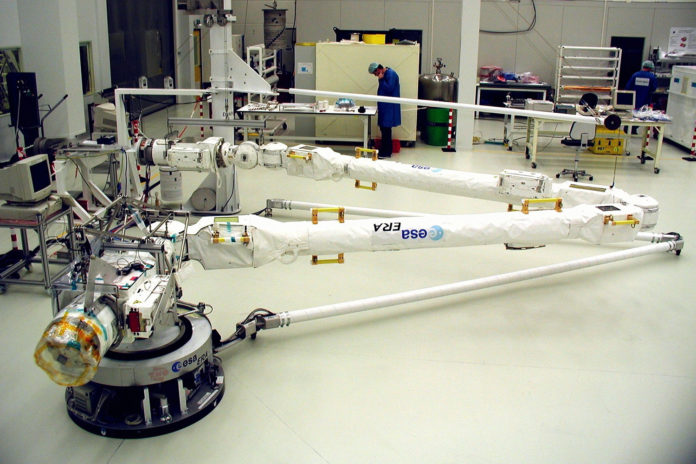Airbus space engineers have installed ESA’s European Robotic Arm (ERA) onto the Russian Multipurpose Laboratory Module (MLM). It is now ready for its flight to the International Space Station (ISS) from the Baikonur Cosmodrome in Kazakhstan later this month.
ERA was designed more than three decades ago and has missed three planned missions to the ISS in the last 20 years because of technical issues. The arm and its two control stations – one for inside and another for outside the orbital outpost – will be launched into space together with the Multipurpose Laboratory Module, called ‘Nauka,’ on a Russian Proton rocket.
At a total length of 11.3 meters, the space robot is a symmetrical, two-handed intelligent robot arm that looks like a pair of compasses. After a one-week journey, the European Robotic Arm will become the first such arm to work around the outside of the Russian segment of the space station, allowing spacewalkers to work more efficiently around that part of the ISS. ERA’s seven joints, which include “an elbow, shoulders, and even wrists,” can handle multi-tonne payloads with a large range of motion for assembly tasks.

The robotic arm can ‘walk’ around the exterior of ISS, hand-over-hand from one fixed base-point to another. ERA’s seven robust and accurate joints, the lightweight limbs, and the control computer in the middle of the arm give the robot arm its versatility.
ERA has the ability to perform many tasks automatically or semi-automatically, can be controlled either from inside or outside the Station, in real-time or pre-programmed. The arm will act as a tool to move payloads directly from inside to outside the ISS without the need for spacewalks and support inspections and operations outside the Space Station using its four infrared cameras.

It teleoperates with an accuracy of 5 millimeters and can be operated by the crew from both inside and outside the Space Station. ERA has a lightweight construction, but thanks to the zero-gravity conditions in space, it can move very large masses: from 3,000 kg routinely up to 8,000 kg in slow modus.
The ISS is already home to two robotic arms, Canada’s Canadarm2 and Japan’s Experimental Module Remote Manipulator System. Both play a crucial role in berthing visiting vehicles and grappling external payloads on the US and Japanese modules. However, their position and range prevent them from working outside parts of the Russian space station.
Now all eyes are on the rocket launch that will take ERA to the space station. The mission is currently scheduled for July 15, with docking on the ISS expected to take place on July 23.
